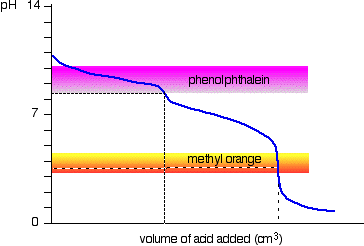In Experiment I, you are titrating only the #"Na"_2"CO"_3#, while in Experiment II you are titrating the #"NaHCO"_3# formed in Experiment I plus what was present in the original mixture.
Experiment I
![Experiment I]()
In Experiment I, you are titrating the mixture of #"Na"_2"CO"_3# and #"NaHCO"_3# to a phenolphthalein end-point.
Phenolphthalein changes colour around pH 9.
The titration curve for #"Na"_2"CO"_3# looks like this:

At the endpoint, you will have neutralized only the #"Na"_2"CO"_3#.
You will not yet have neutralized any #"NaHCO"_3#, so the milliequivalents of #"NaHCO"_3# neutralized are zero.
Experiment II
![Experiment II]()
In Experiment II, you are titrating both the #"NaHCO"_3# that was formed in Experiment I and the #"NaHCO"_3# that was present in the beginning.
Thus, the milliequivalents of base (#"NaHCO"_3#) are those you formed in Experiment I plus those that were initially present.


